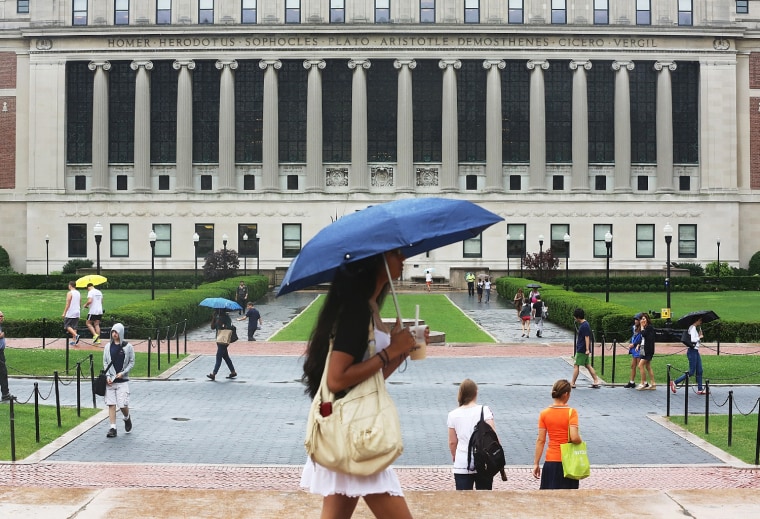The Senate could vote soon on a student loan fix, but parents and students may not have reason to rejoice.
After Congress was unable to reach a compromise, rates for new federal subsidized Stafford loans doubled on July 1, from 3.4 to 6.8 percent. A Senate deal reached Wednesday evening would reportedly set a cap for Stafford and PLUS loans, and peg their rates to the 10-year Treasury note.
Under the proposal, undergraduates could borrow at an expected rate of 3.86 percent for the 2013-14 academic year. Graduate students could borrow at 5.4 percent and parents at 6.4 percent.
House Speaker John Boehner, R-Ohio, was encouraged by the proposal. "(The Senate bill) follows the structure of the House bill: market-based reform, market-based rates, similar what the president called for and what the House has already passed," Boehner said, "So when we see the details, I'm hopeful that we'll be able to put this issue behind us."
(Assuming the proposal becomes law, rates would retroactive to July 1, benefiting consumers who have already taken out federal loans for the coming school year, said Joseph Hurley, a certified public accountant and chief executive of Savingforcollege.com.)
Student loan rates would reset every year on July 1. Undergraduate rates would be capped at 8.25 percent, graduate rates at 9.25 percent and parents' rates at 10.5 percent.
The lower rate provides a little relief for students like Blake Crist, 21, who has relied on a mix of sources, including subsidized and unsubsidized loans, work study and scholarships, to finance his degree in integrated marketing communications from Ithaca College in New York.
"Just the thought of finding a job when you graduate is scary enough," said Crist, who hopes to work in marketing. "It becomes terrifying when you have to worry about paying off loans." He expects the proposed deal will keep his payments a bit lower than they might be, otherwise.
Later students may not see the same benefit. "It's still going to be, effectively, an interest rate increase masquerading as a decrease," said Mark Kantrowitz, publisher of Edvisors Network. Students currently enrolled will benefit from the low interest rates, but as the economy recovers and rates rise, today's high school students could end up paying more than 6.8 percent. "It's far from a permanent solution," he said.
That said, government-subsidized loans are still the cheapest option for student borrowing. Private loans often have higher rates that fluctuate, and may charge students interest while in school or during periods of deferment.
Under the proposed deal, that wouldn't change. "It may not be as cheap down the road, but then, comparable rates will be up too," Hurley said.
But the rate deal doesn't alleviate what experts say is the real problem with student loans: The amount of debt, rather than its cost.
Federal student loan debt has topped $1 trillion, the Consumer Finance Protection Bureau announced Wednesday. All outstanding student loan debt, including private loans as well as federal, tallies $1.2 trillion.
On an individual basis, the average college senior in 2011 had student loan debts of $26,600, according to The Project on Student Debt, up from $25,250 in 2010.
"There's no cheap way to do undergrad right now," said Jonathan Meier, 18, of Manchester, Conn. An incoming freshman heading to Stevens Institute of Technology in New Jersey to study quantitative science, Meier plans to take on $5,500 in unsubsidized loans each year.
Kantrowitz said the cost of college, up about 4 percent in just the last year, has outpaced available grant money. The cost to attend a private college in 2012-13 totaled $39,518, according to the College Board, while in-state public colleges ran $17,136.
Read more: The Most expensive colleges in America
Higher costs force families to take on more loans or choose alternatives like a lower-cost college, which may affect students' ability to graduate on time, he said, and some families are priced out of attending college entirely.
With growing loan debt and higher rates on the horizon, it's more important for families to take steps to prepare financially for college by saving and hunting for scholarships. "Every dollar you save is a dollar you don't have to borrow," Kantrowitz said. For students in school, installment plans for tuition can help spread out the cost, potentially enabling families to pay more out of current income instead of taking out loans.
